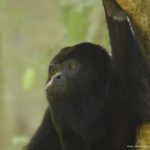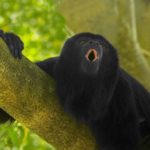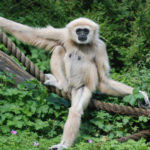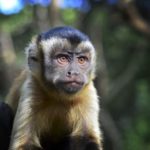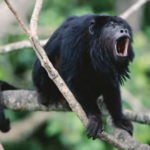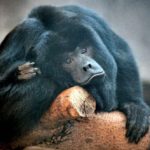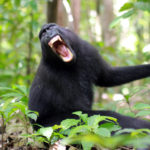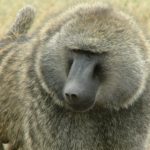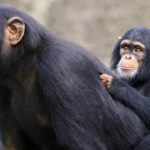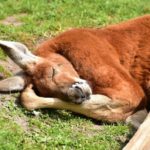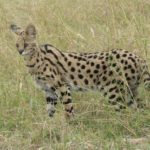Monkeys – information
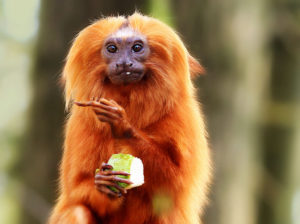 Monkeys are large and small. The smallest monkey is a dwarf gambling, the length of its head and body is about 15 cm. The largest is a gorilla: it grows to 1.85 m. The tail may be absent completely; However, some monkeys also have a tail that is longer than their body. For example, the body of a gulman is 50-70 in length, and the tail is 65-100 cm. His close relative has a golden-chocolate snub-nosed monkey with a body length of 50-80 and a tail up to 104 cm. The game is not only the smallest, but also the lightest monkey ; It weighs only 100 g. And the heaviest of the monkeys is the gorilla. An adult male gorilla can weigh up to 275 kg, that is, about 3,000 times that of a small relative.
Monkeys are large and small. The smallest monkey is a dwarf gambling, the length of its head and body is about 15 cm. The largest is a gorilla: it grows to 1.85 m. The tail may be absent completely; However, some monkeys also have a tail that is longer than their body. For example, the body of a gulman is 50-70 in length, and the tail is 65-100 cm. His close relative has a golden-chocolate snub-nosed monkey with a body length of 50-80 and a tail up to 104 cm. The game is not only the smallest, but also the lightest monkey ; It weighs only 100 g. And the heaviest of the monkeys is the gorilla. An adult male gorilla can weigh up to 275 kg, that is, about 3,000 times that of a small relative.
The brain in monkeys is developed quite well. Many have a round head or an extended muzzle. Eyes are directed forward; Ears most often look like human. The facial muscles are well developed, so monkeys have facial expressions. A particularly important feature in monkeys is their hands and feet, which they use adroitly. The tail often serves as another tool for grasping. Under the guidance of researchers, some monkeys even learn to perform complex actions – often requiring a certain amount of judgment.
Monkeys live in pairs, as well as in small or large groups. They can reproduce throughout the year. They usually have only one cub, which they grow for a long time. Limit age of monkeys from 10 to 40 years. Biologists divide monkeys into two large groups – monkeys from the New and Old World. Monkeys from the New World live exclusively in Central and South America.
They include about 50 species of medium size. All of them live on trees, and their activity falls on the day. Monkeys from the New World include Durukuli (Aotus), Cacajao, Pithecia, Saimiri, Lagothrix, Alouatta, Cebus and Ateles. The largest of them – arachnid, reaching a length of more than 60 cm and has a nearly meter-long grasping tail.
Monkeys from the Old World are common in Africa and in the southern regions of Asia. In the extreme south of Spain lives the only barbarous monkey in Europe. About 80 different species belong to the monkeys of the Old World, among them rhesus macaques (M. mulatto.), Baboons, hussar monkeys, Langurs (Presbytis) and nosachis (Nasalis). Two more important groups belong to the monkeys from the Old World: small apes – gibbons and large apes – orangutans, gorillas and chimpanzees. Along with the monkeys from the New and Old World biologists refer to this group also semi-poor. They represent a transitional stage between insectivorous mammals and monkeys proper.

